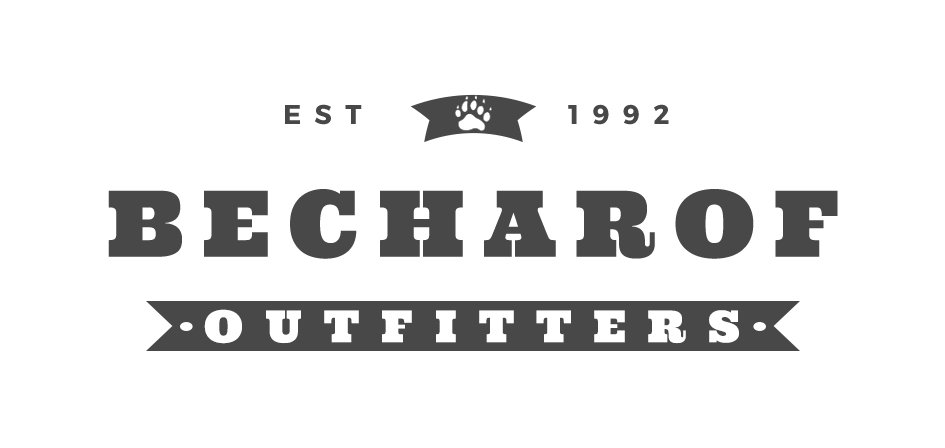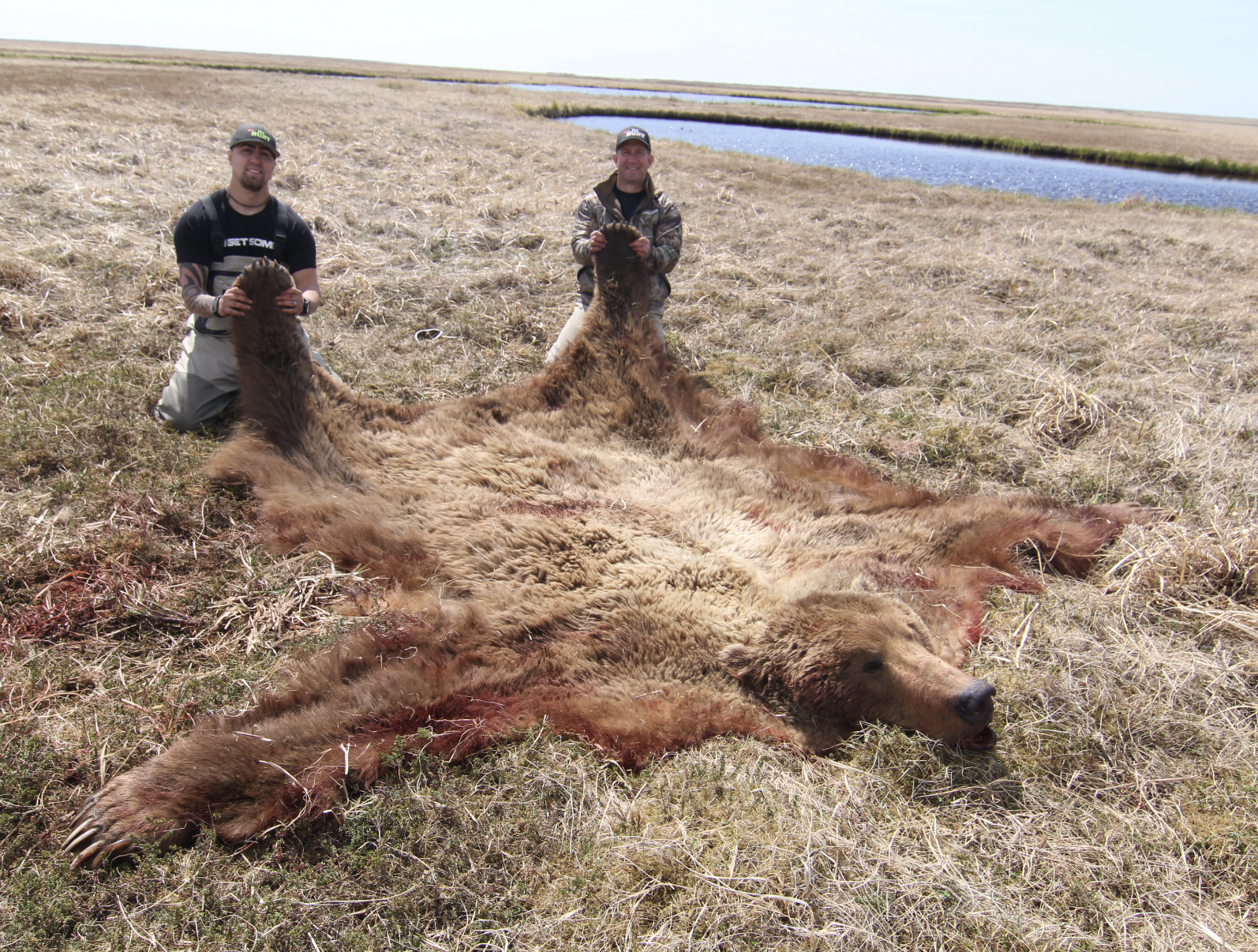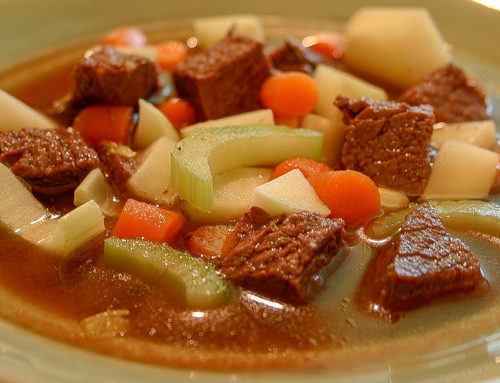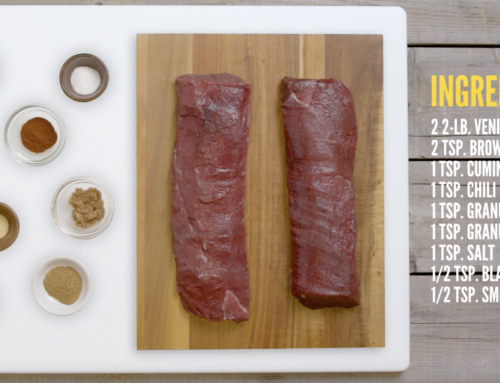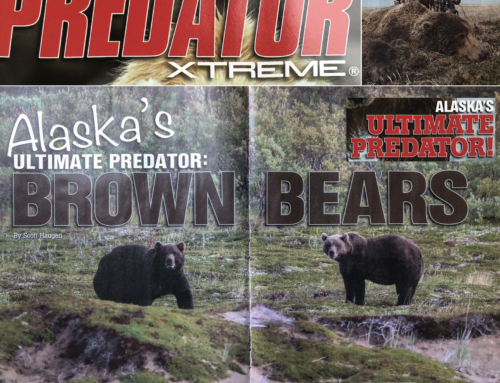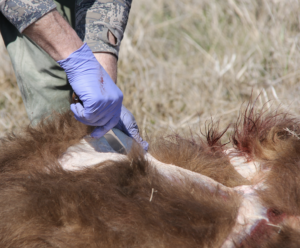 Field dressing big game is an essential part of any big game hunt. Here, at Becharof Lodge, we field dress brown bears, moose, and sometimes caribou and Dall sheep, depending on where we’re hunting and the seasons.
Field dressing big game is an essential part of any big game hunt. Here, at Becharof Lodge, we field dress brown bears, moose, and sometimes caribou and Dall sheep, depending on where we’re hunting and the seasons.
Don’t feel like you need a big blade to skin and breakdown the biggest of Alaska’s big game. A 4-inch bladed knife is plenty to skin, quarter and cape any North American big game. We routinely skin moose and bear with a 4-inch blade, George Joy, our veteran big game guide at Becharof Lodge, often times uses only a 2-inch scalpel blade with no handle!
There are many ways to field dress big game, but our favorite the gutless method. The gutless approach is quick, clean and gets the meat off the animal and cooling quickly.
There are a few ways to perform the gutless method, but our favorite is to start with the animal on its back. This approach leaves the guts inside the body
cavity, so take care not to puncture the abdominal wall. The first cut starts just under the hide, at the genitals, and runs up the stomach to the brisket, or bottom of the rib cage. If not keeping the cape for mounting, continue cutting under the hide, 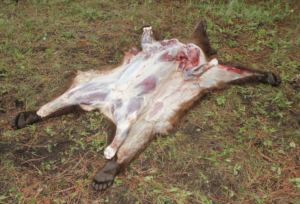 up to the base of the neck.
up to the base of the neck.
Next, grab a foot of the animal and insert the knife inside the knee joint. Lift and slide the blade down the inside of the leg, all the way to the center of the body, meeting the initial cut that was made up the mid-section. Repeat the same cut on the other three legs. Keeping the blade on the skin side (not the hair side), cut around the hide at each knee joint, severing the hide. We like leaving the lower legs attached for leverage while skinning and quartering the rest of the animal.
For the next cut, start with a hind quarter and work your way along one side of the body. Skin one side of the animal first, then the other side. When you’re done skinning, the entire hide will lay flat on the ground. This offers a clean work area and exposes the meat to the air so it can start cooling.
As you cut at the back of the hind quarters and near the tail, the skin will be tight and firmly attached. Keep cutting at the points of most resistance, freeing-up the hide. Work down one hind quarter, the mid-section, then the front shoulder.
As you continue removing the skin, you’ll end up under the spine. Skin all the way to the spine on both sides of the animal, which will free-up the entire hide. Now the only place the hide is connected to the carcass is at the neck.
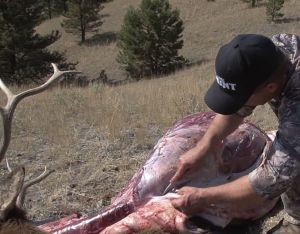 Once all the skin has been cut from the carcass, grab the skin of each leg, pull it away from the center of the carcass which is sitting on the center of the hide, and lay it flat on the ground. This gives you the entire hide to use as work area which keeps the meat clean.
Once all the skin has been cut from the carcass, grab the skin of each leg, pull it away from the center of the carcass which is sitting on the center of the hide, and lay it flat on the ground. This gives you the entire hide to use as work area which keeps the meat clean.
Now it’s time to remove all four quarters. Start with the hind quarter, as that’s the biggest section of meat that needs to get cooling the fastest. Cut down the inside of the leg, keeping the knife blade tight to the pelvic bone in order to retain all the meat. The only blood released in this method method of field dressing happens now, when the femoral artery is severed. Keep cutting through the muscle until contacting the ball and socket joint. The socket tissue is cartilage, so can easily be cut through. Keep cutting the cartilage, then severe the ball from the socket joint. Continue cutting against the pelvis, to the backbone, and one hind quarter is removed. Repeat the on the other side.
The front shoulder is easy to remove, as there’s no bone-to-bone connection. Simply lift the leg and cut from the underside, separating it from the ribs. As you reach the scapula, take care not to cut too deeply, as that could ruin the backstrap.
With both front legs removed, it’s time to take out the backstrap. We like removing the legs before the backstrap, as the backstrap actually runs all the way from the upper portion of the neck, under the scapula, to the pelvis, so removing the shoulders exposes the entire backstrap. Run the blade down each side of the spine, cutting the backstrap away from the backbone. Peel the silver skin away from the backstrap, toward the ribs. Once the silver skin reaches the ribs, it won’t peel any more. Go to the hip joint and crosscut the end of the backstrap. Grab the end of the severed backstrap, lifting and cutting all the way to the neck. Make an “L” shaped slice with each move of the blade, going from the spine to along the ribs, or vise-versa, until the entire backstrap is free.
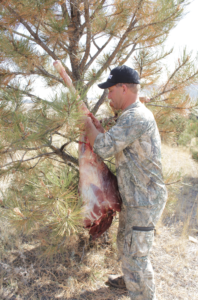
Next, fillet the neck meat off the bone. Start by cutting down the spine, filleting one side at a time, just as you’d fillet a salmon. For deer, place the neck fillet in a slow cooker and get ready for some of the best eating meat there is. Of course, elk and moose neck fillets will need to be cut into smaller sections, but can be cooked the same way.
As for the tenderloins, they can be removed with the guts still in the cavity. There’s a fused section of spine that’s thin and sharp, and starts right behind the last rib. Slip the tip of your knife under the thin stomach muscle, right behind the last rib, and run it along that boney shelf. Reach your hand inside the incision, running it along the tenderloin. You can actually lift the tenderloin away from the spine without even cutting. On the tight connections, grab the knife, push the stomach away with the back of your hand, and cut the tenderloin free.
All that’s left is to fillet the rib meat off the bone. If you’re saving the ribs, bone and all, simply cut the stomach muscles, pull out the internal organs (keep heart  and liver if desired), then cut away the ribs. Ribs can be separated from the sternum with a knife, cutting where bone meets cartilage.
and liver if desired), then cut away the ribs. Ribs can be separated from the sternum with a knife, cutting where bone meets cartilage.
To break the ribs away from the spine on deer-sized game, score them several times with your blade, about an inch from the spine. Give a hefty push with both hands, and the ribs will break away. Cut the tissues with the knife, and you have half-a-ribcage, ready to cook. For elk and larger game, disarticulate ribs at the joint.
The gutless method is fast, easy and what we use on most game animals. Be sure and know the laws in terms of what meat must be salvaged from the field. With a sharp knife and a steel, you’re ready to field dress any big game in the world.
